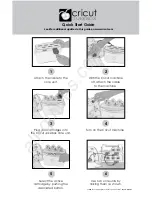
9
6.
HEADS ORIENTATION
The detection heads MUST be oriented to direct the IR beams downwards, NEVER towards the up.
Furthermore, the beams must end against a surface (wall, terrain) so to define the detection area e not point towards open
space. All this to avoid the sensor blinded by direct sun lights or unwanted heat sources.
The two detecting heads
MUST
be adjusted in order to create slightly divergent beams: the one pointed upwards towards
the most distant area, the one pointed downwards towards a nearer area: in this way the sensor generates alarm only when
a human intruder is detected by both beams.
The alarm is not generated if only one of the two beams detects (example: animals).
Small alterations in the heads position correspond to big alterations (at 12 m distance) of the beams detection areas: a 1°
lateral rotation of the head corresponds to a 20 cm shift of the beams at a distance of 12 m.
It is therefore recommended to execute a meticulous adjustment and several tests in order to obtain the result desired.
NEVER POINT the heads directly towards reflective surfaces, in order to avoid unwanted detections. Typical examples of
reflective surfaces are: windows, glass walls, water puddles, wet roads, smooth concrete surfaces, paved roads.
The reflection level of these surfaces is not at 100%, anyway if the source of heat is very strong, the reflection may be enough
to alarm the sensor.
NO!
NO!!
OK
Summary of Contents for DIRFE
Page 5: ...5 5 CORRECT USE OF THE SENSOR A B C ...
Page 19: ...19 ...
Page 20: ...20 This manual may be subject to change without notice ...






































